Baby food black beans
Black Beans for Baby (Puree and BLW)
Learn how to serve black beans for baby—whether from a can or cooked from dry—with these easy ideas for finger foods and bean puree.
Black Beans for Baby
Beans are one of the most affordable, nutritious plant-based proteins around, and they are—fortunately for us!—so easy to prepare for kids of all ages. My girls are a little obsessed with black beans, so we use them weekly. I’m going to share my favorite easy methods for serving beans to babies and toddlers, including as a puree, finger food, and baby-led-weaning style.
And at the end of the post, be sure to check out my favorite recipes featuring beans.
Bean Puree
You can transform any cooked bean, including black beans, pinto beans, and garbanzo beans, into a puree. All you need to do is blend the beans very smooth in a blender with as much liquid as it takes to move the mixture easily.
Then, you can serve it as a Stage 1 baby food or use it together with other purees as a Stage 2 or 3 baby food. It’s particularly great mixed with Sweet Potato Baby Food and Avocado Puree.
Beans for Baby-Led Weaning
You can mash any fully cooked beans onto a spoon or a stick of lightly toasted bread so baby can self-feed BLW style. This is an easy way to let them feed themselves.
And once they are able to pick up smaller pieces of food, they can pick up the beans with their finger.
Ingredients You Need
To make black beans for baby, you can start with purchased cooked beans in a BPA-free can (if possible) or carton. Or you can cook them from dry at home. I love to make them in my Instant Pot or slow cooker, since all you need is water, and the machine does the rest.
Step-by-Step Instructions
Here’s the basic info on how to prepare beans at home for baby:
- If starting with cooked beans in a carton or can, drain them in a colander. Rinse them to remove the liquid that was in the can. This helps to freshen them and also remove excess salt. Warm slightly and add seasoning as desired.
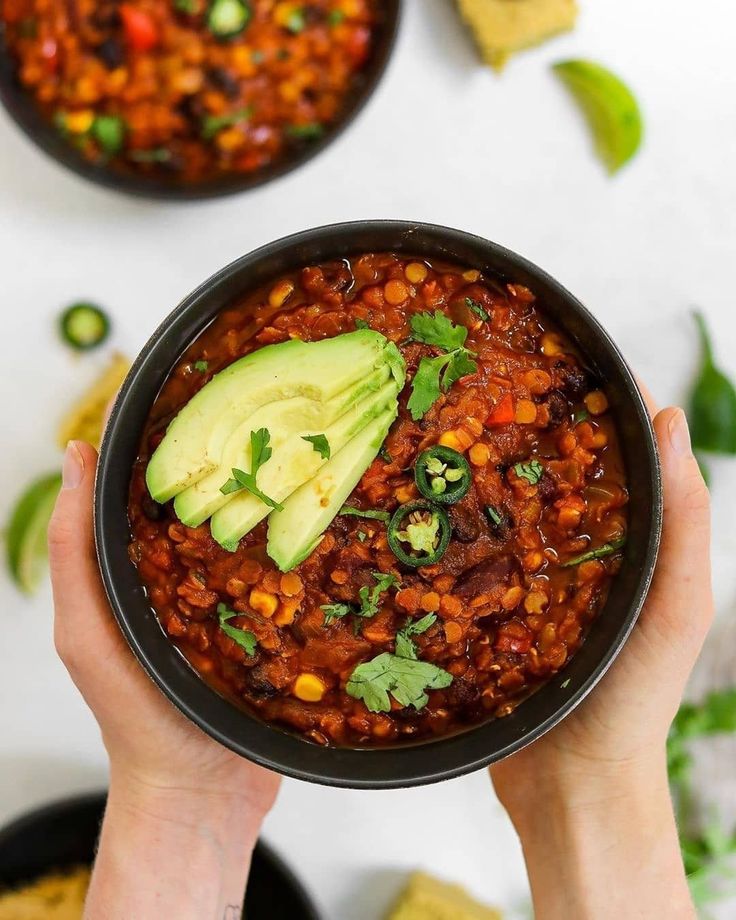
- To cook from dry, add beans to a slow cooker or pressure cooker with some garlic and water. Cook according to this easy black bean recipe. Drain.
- To serve as a finger food, mash just slightly.
- To puree, add beans to a blender and blend until smooth, adding a little liquid at a time until you reach the desired consistency.
How to Add Flavor to Black Beans
You can add a range of seasonings and other foods to black beans to make them more flavorful. Here are some favorites:
- Cumin
- Chili powder
- Oregano
- Sweet Potato Baby Food, Avocado Puree, quinoa, mild salsa, mild guacamole, sour cream
How to Store
You can store beans for baby in an airtight storage container in the fridge for up to 5 days or in the freezer for up to 6 months.
Frequently Asked Questions
Can babies eat black beans?
Yes, babies can eat well-cooked black beans as a puree, mashed onto toast or a spoon as a BLW food, or as a finger food.
How do I introduce black beans to my baby?
You can start with a small amount of pureed black beans or for an older baby, offer slightly mashed beans as a finger food.
Are black beans hard for babies to digest?
When cooked until soft, they should be easy for babies to digest. You may have some gas, which could simply be a reaction to a new-to-baby food.
Best Tips for Success
- Start with cooked beans from a can, carton, or that you’ve cooked from dry. If using canned or beans from a carton, drain and rinse them before using to freshen and remove salt.
- To puree, blend with water or no-salt-added chicken or vegetable stock.
- To serve as a BLW-food, mash beans onto a lightly toasted stick of toast or spoon so they can self-feed.
- To serve as a finger food, mash slightly and let baby self-feed.
- Add flavor from seasonings as you like.

Related Recipes
I’d love to hear your feedback on this post, so please comment and rate below!
Prep Time 5 minutes
Cook Time 0 minutes
Total Time 5 minutes
Cuisine American
Course Baby Food
Calories 57kcal
Servings 4
- ▢ 1 cup black beans (fully cooked)
- ▢ 2-4 tablespoons water or no-salt-added chicken or vegetable stock (optional)
- ▢ ⅛ teaspoon cumin, oregano, or chili powder (optional)
To make black bean puree:
Add the beans to a blender. Blend, adding 1 tablespoon water (or no-salt-added chicken or vegetable stock) at a time to reach the desired consistency. I usually add ¼ cup.
To serve black beans BLW Style:
Add optional seasoning as desired. Mash beans onto a lightly toasted stick of toast or spoon so they can self-feed.
To serve black beans as finger food:
Vitamix Blender
Storage Containers
- You can store beans for baby in an airtight storage container in the fridge for up to 5 days or in the freezer for up to 6 months.

- Start with cooked beans from a can, carton, or that you’ve cooked from dry. If using canned or beans from a carton, drain and rinse them before using to freshen and remove salt.
- Try this easy Slow Cooker or Instant Pot Black Bean recipe to start with dry beans.
- To puree, blend with water or no-salt-added chicken or vegetable stock. Then, you can serve it as a Stage 1 baby food, or use it together with other purees as a Stage 2 or 3 baby food. It’s particularly great mixed with Sweet Potato Baby Food and Avocado Puree.
- To serve as a BLW food, mash beans onto a lightly toasted stick of toast or spoon so they can self-feed.
- To serve as a finger food, mash slightly and let baby self-feed.
- Add flavor from seasonings as you like.
Serving: 0.25cup, Calories: 57kcal, Carbohydrates: 10g, Protein: 4g, Fat: 1g, Saturated Fat: 1g, Polyunsaturated Fat: 1g, Monounsaturated Fat: 1g, Sodium: 1mg, Potassium: 153mg, Fiber: 4g, Vitamin A: 3IU, Calcium: 12mg, Iron: 1mg
Tried this recipe?Rate in the comments and tag @yummytoddlerfood on IG!
The Ultimate Guide to Beans for Babies
Jump to Recipe
Beans are terrific first foods for babies! Here's how to cook and serve to your baby along with plenty of recipes to help make introducing beans easy and fun!
Jump to:- When can babies eat beans?
- Health Benefits
- Do beans make babies gassy?
- Are beans safe for babies?
- Types of Beans- which one is best?
- But what about the antinutrients?
- Soaking Beans
- Cooking Methods
- Canned Beans
- How to Serve Beans to Babies (Baby Led Weaning)
- Bean Recipes for Babies and Toddlers
- Frequently Asked Questions
- How to Store Cooked Beans
- Cooking Beans for Babies (3 Methods)
When can babies eat beans?
If cooked to soft, beans can be offered to babies as soon as they’re ready to start solids, usually around 6 months.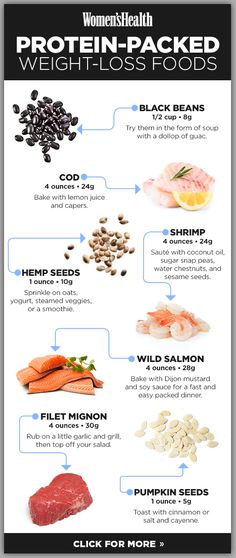 It’s important to remember that your baby is unique and that rather than going by the calendar, you need to make sure your baby is DEVELOPMENTALLY ready to start solids.
It’s important to remember that your baby is unique and that rather than going by the calendar, you need to make sure your baby is DEVELOPMENTALLY ready to start solids.
If you’re unsure, be sure to grab my FREE handout!
Health Benefits
Beans are classified as a legume (also called pulses), along with peanuts, peas, and lentils. This is a family that packs a powerful punch when it comes to nutrition.
Beans are SO great for babies! They are loaded with the essential nutrients babies need to grow and thrive, including iron, zinc, folate, protein, carbohydrates, and fiber.
Be sure to pair them with vitamin C rich foods to greatly enhance the absorption of iron!
And while colorful fruits and vegetables are considered to be the best source of phytonutrients, beans are also a great source for these antioxidant, anti-inflammatory, and other health-promoting compounds.
Related: Best Iron-Rich Foods for Babies and Toddlers
Do beans make babies gassy?
Foods that are rich in fiber tend to cause gas. This list includes beans, cruciferous vegetables, oatmeal, prunes, peaches, and pears.
This list includes beans, cruciferous vegetables, oatmeal, prunes, peaches, and pears.
There's no need to avoid these foods completely as they offer so many beneficial nutrients that are essnetial for proper growth and development.
Not to mention, early introduction to a wide variety of flavors and textures is key in minimizing picky eating down the road.
Start by offering a small amount (1-2 tablespoons) and gradually serve more.
If your baby becomes gassy but doesn't seem to be in discomfort, there's no reason to worry. If your baby gets extra gassy after eating a certain bean, just don't overload them with those foods. You can also try different varieties as your baby may do better with certain beans than others.
For instance, my baby did well with all the beans that were served except for black beans. But after about 3 exposures, she seemed to tolerate just fine.
Are beans safe for babies?
Depending on the size and shape, beans can pose a choking risk. To reduce the risk, smash/flatten them, removing any skin that comes off. And follow the age-based serving suggestions shared below.
To reduce the risk, smash/flatten them, removing any skin that comes off. And follow the age-based serving suggestions shared below.
If you're cooking the beans rather than using canned, make sure they are soft and easily smushed between your thumb and forefinger.
It's also very important that you ALWAYS serve food at the table where your baby is sitting upright at a 90 degree angle. Even foods that aren't considered to choking hazards can be dangerous if given while baby is lying down, crawling, walking, etc.
In regards to allergies, soybeans are one of the top allergens so be sure to introduce them separately. While it's not impossible, an allergy to the rest of the beans is rare.
What to do when baby won't eat
Types of Beans- which one is best?
Did you know that there are nearly 400 types of beans?! Here are the most common ones that you're likely to find at the stores.
- Black Beans
- Black eyed peas
- Cannellini beans (or white Italian kidney beans)
- Edamame
- Garbanzo beans (chickpeas)
- Great Northern Beans
- Kidney beans
- Pinto beans
ALL beans are fantastic for babies. I highlighted the two essential nutrients during the first year in the chart above, and as you can see, they are pretty similar in their nutritional profile.
I highlighted the two essential nutrients during the first year in the chart above, and as you can see, they are pretty similar in their nutritional profile.
VARIETY is always best so give some love to as many beans as you can ;).
But what about the antinutrients?
It’s true that legumes contain antinutrients, such as phytic acid, lectins, saponins, and tannins, that reduce the absorption of certain nutrients, including iron, zinc, and calcium.
However, many other healthy foods, like grains, leafy greens, nuts, and seeds all contain antinutrients. So does this mean we should limit or avoid them? Of course not.
Instead, always aim for variety and balance! Unless beans are all you are serving to your baby, the benefits outweigh the risks of consuming antinutrients.
Not to mention soaking and cooking will decrease the amount of antinutrients significantly.
All this to say, DON’T WORRY!
Soaking Beans
after soaking for 8 hours overnightWhile it's an extra step, I highly recommend soaking. It will not only decrease cooking time but will also help the beans cook more evenly and make them easier to digest.
It will not only decrease cooking time but will also help the beans cook more evenly and make them easier to digest.
The beans will expand upon soaking so be sure to take this into account when choosing the size of the bowl.
Overnight soaking
Place dried beans in a large bowl, cover with water by 2 inches, discard any that float, and soak on the counter, covered, for at least 4 hours or overnight.
If soaking for more than 8 hours, transfer to the refrigerator. Drain and rinse before using.
Quick soaking
On the stove- Add beans to a pot and cover with water by 2 inches. Bring to a boil. Remove from heat and let soak for an hour. Drain and rinse before cooking.
Cooking Methods
Besides being nutrient dense, beans are inexpensive and last a long time in the pantry (hallelujah!).
Regardless of which method you choose, be sure to:
- Sort through the beans to remove any debris or shriveled beans.
- Rinse under running cold water to remove any surface dust or dirt
Cooking times will vary depending on the variety, age of the beans, and even the type of water you use. If your water has a lot of calcium, it can increase the time.
If your water has a lot of calcium, it can increase the time.
I’ve provided approximate cooking times. I encourage you to start checking for doneness at the beginning of the time range and then every 15 minutes thereafter.
Be sure to jot down the final cooking times somewhere for future reference.
On the Stove
- Add beans to a pot and cover with at least 2 inches of water.
- Bring to a boil. Then reduce heat to low and simmer, with lid slightly open, until tender.
- Stir occasionally. Do NOT try to rush the process by cranking up the heat. You will end up with a mushy exterior and undercooked interior.
Low and steady for best results! Add more water as needed so that the beans stay submerged.
It will generally take about 1-2 hours to cook. Start checking for doneness after an hour.
Slow Cooker
Cover beans with 2 inches of water. Set to low and cook for 6-8 hours.
Note - Kidney beans in particular contain a large amount of a toxin called phytohaemagglutinin (or kidney bean lectins) that doesn’t get destroyed when cooked in the slow cooker.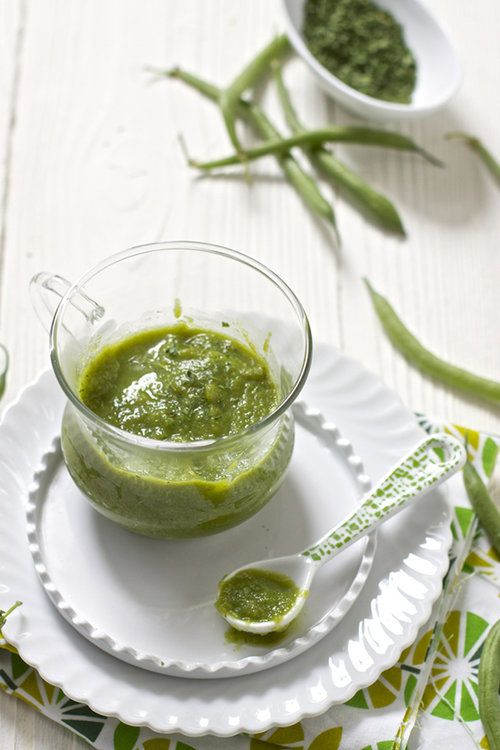 That's because the temperature never gets hot enough.
That's because the temperature never gets hot enough.
Therefore, be sure to soak and then boil for at least 10 minutes before adding to the slow cooker.
Instant Pot
Add beans to Instant pot and cover with water to about 2 inches above the beans. Stir, close the lid, and cook on high pressure for 8-15 minutes.
Allow pressure to release naturally for 15 minutes.
Here are the cooking times for the beans I cook most often:
- Black beans: 8-10 minutes
- Cannellini: 8-10 minutes
- Chickpeas: 10-12 minutes
Canned Beans
While dried beans are less expensive, canned ones are so convenient and great time-savers since they are fully cooked. They are just as nutritious as the dried beans.
I used to cook them all the time, but now that I'm a mom of two, I will take all the help I can get!
Be sure to look for ones that are labeled "no salt added" or "low sodium" and that come with non-BPA lining. Rinsing them in running water can lower the sodium content even more.
How to Serve Beans to Babies (Baby Led Weaning)
I could do a whole post on this as beans go well with so many different foods and flavors! Here are some EASY and nutritious ways to add them into your baby's diet.
6-9 months old:
You can try serving whole beans. Just be sure to flatten using your fingers or the back of a fork, removing any loose skin in the process. But if this makes you uncomfortable, don't do it! I am a big believer in know all things and then follow your heart.
You can also puree/blend or mash. The consistency is pretty thick and dry so add some breastmilk/formula to thin it out.
And here are some fun and EASY ways to boost nutrition and introduce your baby to a ton of flavors and texture in one bite. Add beans to:
- Yogurt
- Avocado
- Mashed sweet potatoes
- Mashed butternut squash
- Oatmeal - follow the recipe and then add the beans once cooked
- Lentils
- Hummus/Dip (recipes linked below)
Pictured above are the exact meals I served to my baby during her first month of starting solids.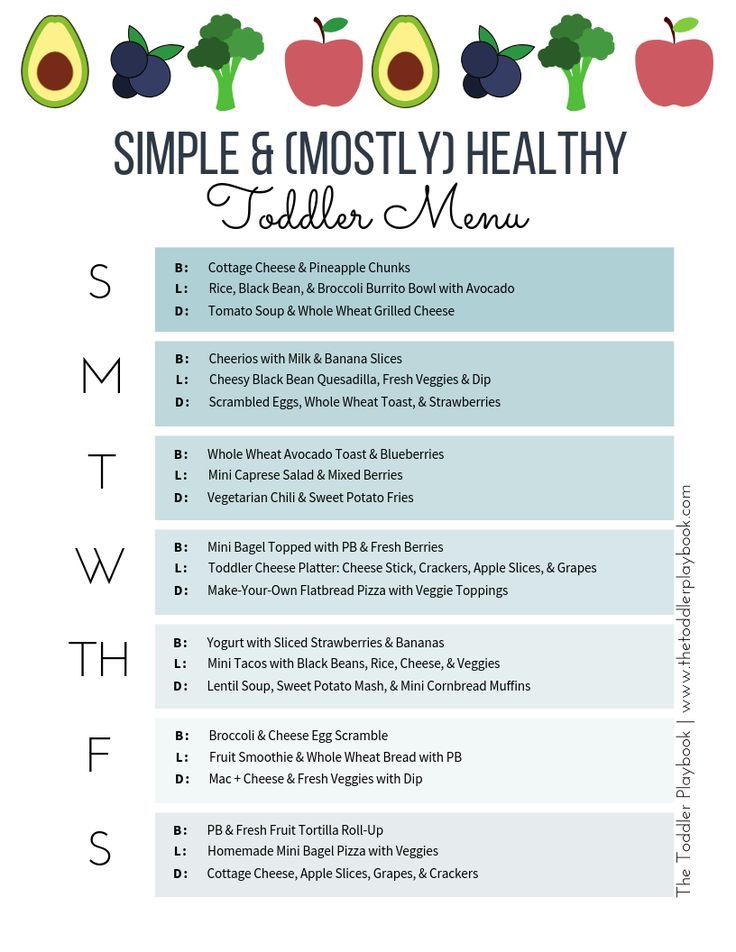 I actually filmed EVERYTHING I made for her as well as my toddler, husband, and me from Day 1 to Day 84 (so 3 months) in real time and turned it into an easy to access and follow program!
I actually filmed EVERYTHING I made for her as well as my toddler, husband, and me from Day 1 to Day 84 (so 3 months) in real time and turned it into an easy to access and follow program!
9+ months old:
I encourage you to continue offering mixed foods before your baby becomes more selective. If they’ve never had foods touching and mixed together, it will be much harder to get them to eat these later on.
I've included plenty of family-friendly meals to help get you started! Continue to flatten chickpeas and all other round varieties.
If you haven't already, this is a good time to introduce utensils (linked our favorites).
12+ months old:
Anything goes at this age! My personal favorite is adding whole beans to my son's school lunch boxes. SOO easy and convenient.
Related: Lunchbox Ideas for Preschool
Bean Recipes for Babies and Toddlers
Dips/ Sauce
- Broccoli Hummus
- Beet Hummus
- Yogurt Black Bean Dip
- Beetroot Dip
- Pumpkin seed spinach hummus
- Nut -Free Broccoli White Bean Pesto
Finger Foods
- Chickpea Veggie Cakes
- Beet Muffins
- Pumpkin Bean Muffins
- Mexican Lentil Muffins
- Sweet Potato Chickpea Cookies
- Southwestern Oat Muffins
Lunch/Dinner
- Pizza Quesadilla with vegetables
- Chicken Quinoa Casserole
- Cauliflower Chickpea Soup
- Salmon Bean Salad
- Vegan Creamy Tomato Pasta
- Slow Cooker Lentil Chili
- Vegetarian Mexican Lentils
- African Peanut Stew
- Instant Pot Multigrain Rice
Frequently Asked Questions
Are beans hard for babies to digest?
While highly nutritious, they contain a lot of fiber, which can cause gas and diarrhea, if given in large portions. Therefore, when first introducing, start with 1-2 tablespoons and increase depending on your baby's response.
Therefore, when first introducing, start with 1-2 tablespoons and increase depending on your baby's response.
Can I season beans for babies?
Yes yes yes! Season away! I highly advise you to have fun with all kinds of herbs and spices. It’s such an easy way to invite variety and flavor, without the use of salt.
Can babies eat beans everyday?
They can. But since offering a wide variety of flavors and textures is so crucial at this stage, be sure to switch it up by incorporating any of the serving suggestions I've provided above.
How much does 1 pound of dried beans make once cooked?
You will end up with around 6 cups of cooked beans, which is equivalent to 4 (15 ounce) cans. This is why cooking at home is much more economical.
How to Store Cooked Beans
In the refrigerator
You can transfer to an airtight container/jar with or without the cooking water.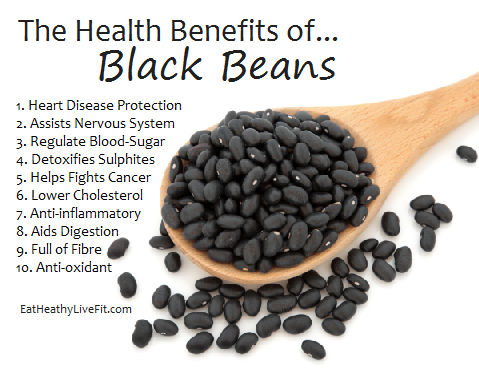
I've found that storing along with the liquid prevents the skins from drying out, but it's really up to you. If you intend to use for soup, the liquid also adds a nice yum factor.
Refrigerate for up to 5 days.
In the freezer
I recommend freezing in 1 ½ cup portions. A lot of recipes call for a 15 ounce can, which is roughly around 1 ½ cups.
If freezing with the cooking liquid, be sure to leave about 1 inch at the top for expansion.
Freeze for up to 3 months.
If freezing with the cooking liquid, be sure to leave about 1 inch at the top for expansion.
Do you want to minimize picky eating and set a solid foundation for a lifetime of healthy eating habits?
Check out this 3 month mastering self-feeding program! It’s the closest thing to me being in your kitchen
Did you make this recipe? Leave a rating below and let me know how you liked the recipe! Your feedback means so much to me!
Cooking Beans for Babies (3 Methods)
Beans are terrific first foods for babies! Here are three methods for cooking dried beans.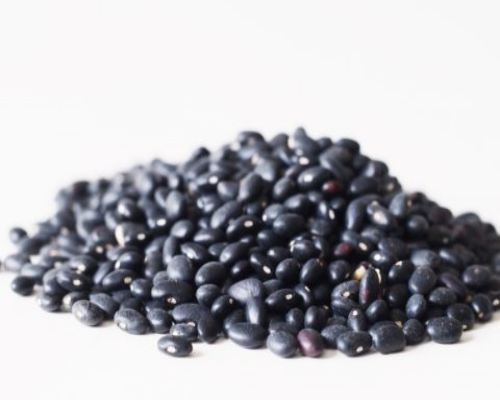
5 from 1 vote
Print PinPrep Time: 5 minutes
Cook Time: 1 hour
soaking time: 8 hours
Servings: 12 (makes about 6 cups)
Author: Min | MJ and Hungryman
- ▢
Instant Pot
- ▢ 1 pound (2 cups) dried beans
- ▢ Water or broth
Prepare the Beans
Sort through the beans to remove any debris or shriveled beans. Soak overnight or quick soak. Drain and rinse well.
On the Stove
Soak for at least 8 hours. Drain and rinse.
Place in a large pot and cover with water. Bring to a boil. Reduce the heat to a gentle simmer, and cook, covered with lid slightly ajar,. Skim off any foam that rises to the top.
It will generally take about 1-2 hours to cook. Start checking for doneness after an hour. Continue cooking until beans are tender.
Slow Cooker
Place beans in the bottom of the slow cooker.
 Cover beans with water. Close the lid and cook on low for 6-8 hours. See note if using red kidney beans.
Cover beans with water. Close the lid and cook on low for 6-8 hours. See note if using red kidney beans.
Instant Pot
Add beans to the Instant Pot. Cover with water and stir. Close the lid, making sure to turn the steam release valve to the sealing position.
Set the cook time using the Pressure Cook or Manual button, at high pressure. Keep in mind the IP will take about 15-20 minutes to reach pressure before cooking begins.
Cook for 8-15 minutes, depending on the variety. Allow the pressure to release naturally for 15 minutes. This will help beans retain their shape and avoids the liquid from foaming up into the steam valve.
If you find that beans are not as soft as you want them to be, put the lid back on, making sure the release valve is set back to "sealing" and cook at high pressure for several more minutes.
- When cooking beans for the first time, start checking for doneness at the start of the cook time range.
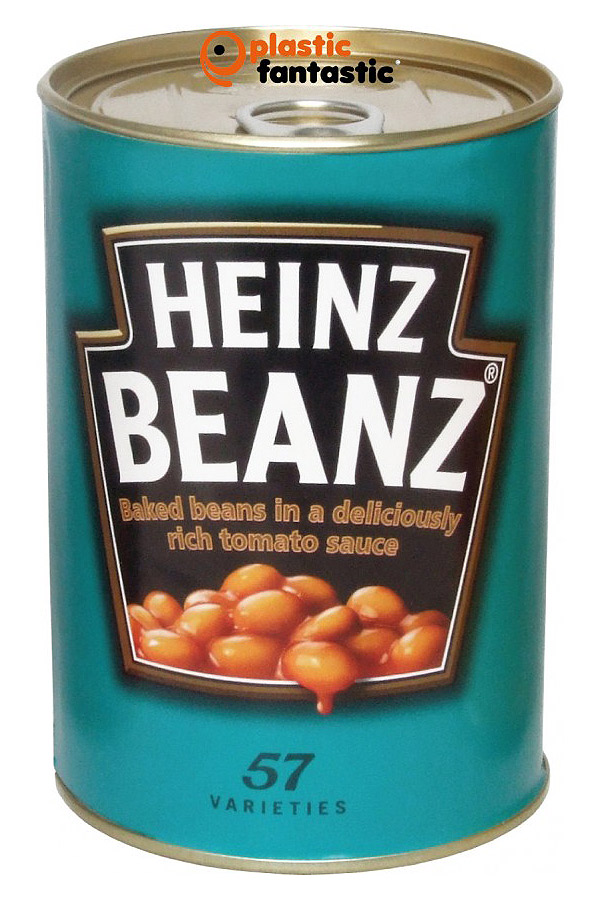 Write it down for future reference.
Write it down for future reference. - If cooking kidney beans in the slow cooker, be sure to soak and then boil for at least 10 minutes before adding to the slow cooker to make them easier to digest.
- To store:
- In the fridge for up to 5 days in an airtight container with or without the cooking liquid.
- In the freezer: recommend freezing in 1 ½ cup portions. Freeze for up to 3 months.
Calories: 129kcal | Carbohydrates: 24g | Protein: 8g | Fat: 1g | Sodium: 2mg | Fiber: 6g | Sugar: 1g | Calcium: 46mg | Iron: 2mg
Course Side
Cuisine American
Tried this Recipe? Tag me Today!Tag me @KidFriendly.Meals today!
Healthy food. Slimming. How to eat healthy healthy food. Food quality. Articles, surveys, ratings.
Black beans with pork, or feijoada, reflects the spirit of Brazil in the best possible way - this nutritious and satisfying dish is very popular among poor but energetic Brazilians. Surely everyone who came to the Olympics in Rio tried it. But few people know that the main ingredient of the dish is not meat, but beans, which the Pope opposed.
Surely everyone who came to the Olympics in Rio tried it. But few people know that the main ingredient of the dish is not meat, but beans, which the Pope opposed.
text: Natalia Vorontsova
Beans came to Europe thanks to Christopher Columbus . However, its cultivation required the permission of Pope Clement VII - uncle Catherine de Medici and a mediocre politician in combination. Apparently, political myopia prevented him from seeing the harmless beans - Clement VII blessed her only as an ornamental plant.
And yet, despite the pious verdict, the overseas novelty immediately found its way to consumers: the Romans came to the conclusion that the beans forbidden to eat ... suit them! And they began to prepare white bean flour - an exceptionally famous cosmetic product of those years, smoothing wrinkles and refreshing the skin.
Beans were brought to Russia only in the 18th century, during the reign of Elizabeth Petrovna, and at first they were also used exclusively for landscape beauties.
Why for so many years the reliable story of Columbus that the Indians eat beans without any risk to their lives did not convince anyone, history is silent about this. As a result, the vigilance shown by the Pope for almost two centuries delayed the appearance of beans in all European menus - in contrast to the Egyptian pharaohs and Chinese tangerines, who ate beans long before our era.
Beans have two homelands - South Asia and Central and South America, while the championship belongs to the second: there are more than 230 varieties of it. Almost all types of beans are edible, demonstrating a truly gigantic variety of dishes prepared from them.
Beans baked with beef brisket and sugar syrup, once the food of cowboy-hatted pioneers of the Wild West, are now the national dish of the United States and Canada. The most famous bean dish among Russians is bean soup with smoked pork ribs. But it seems that he has long since given way to lobio, a traditional Georgian dish of red or green beans. Something similar - bean paste - is also loved in Israel, now visa-free for Russians, so be sure to hint your beloved relatives to treat you to this yummy. However, you will not be left without beans in Greek resorts either - our citizens have long been accustomed there to beans stewed with onions and tomatoes in clay pots. And in Turkey, it will be difficult for you not to try mashed plums and beans with croutons.
Something similar - bean paste - is also loved in Israel, now visa-free for Russians, so be sure to hint your beloved relatives to treat you to this yummy. However, you will not be left without beans in Greek resorts either - our citizens have long been accustomed there to beans stewed with onions and tomatoes in clay pots. And in Turkey, it will be difficult for you not to try mashed plums and beans with croutons.
And this is not the most surprising. There is no limit to the national fantasy of chefs. Who would have thought that in neighboring Belarus they love borscht not only with beans, but also with apples. And in Spain they eat bacon no less than in Ukraine - and all because with beans, and with local white beans. In Guatemala (Central America), beans - exclusively black - are not dispensed with at diplomatic receptions. Guatemalans literally love beans - local factories, not knowing how else to amaze gourmets, even produce beans in chocolate. By the way, black beans taste slightly mushroomy and very tender. Chinese cuisine prefers bean flour, which is traditionally used to make noodles and biscuits. And in Japan they know how to enjoy not only buns stuffed with beans, but also bean marshmallows. At the same time, the Japanese prefer the red variety, because local legends say that the red color of the beans drives away evil spirits.
Chinese cuisine prefers bean flour, which is traditionally used to make noodles and biscuits. And in Japan they know how to enjoy not only buns stuffed with beans, but also bean marshmallows. At the same time, the Japanese prefer the red variety, because local legends say that the red color of the beans drives away evil spirits.
Oddly enough, but evil spirits really try to bypass beans - it has been scientifically proven that its regular use improves immunity and has an antimicrobial effect. Beans contain a huge amount of zinc, and in fact it is involved in the synthesis of insulin by our body, as well as some other important hormones and enzymes. Add here essential amino acids for humans, a large amount of potassium, and you will understand why beans are strongly recommended for people suffering from such serious diseases as diabetes, rheumatism, pancreatitis, atherosclerosis, kidney stones, gastritis, hypertension, ulcers, eczema.
Beans should be soaked before cooking, and they should be cooked over low heat. At the same time, be careful - the beans should be boiled for at least ten minutes, since they also contain toxic substances that are safely destroyed under the influence of high temperatures.
Lamb with beans
Rinse the beans well, cover with cold water and leave for several hours. In the same water, boil it over low heat so that the beans become soft, but do not lose their shape. Drain the water. Finely chop the onion and fry in oil. Chop the lamb into pieces and fry until half cooked. Put the meat and onions in a saucepan, add water, add salt, pepper, close the lid and simmer until tender. Five minutes before the end, put strained beans in a saucepan and sweat a little more on the fire.
photo: aldeiatem.com
Printable versionArticle tags: Food
90,000 guide to the WIC program in New Jersey EnglishChild Formula
brand, Size and amount specified in your check WIC
Children's food
Fruits and Vegetables
- AM the size shown on your WIC check
- Variety of single-ingredient commercial fruits for baby food
- Variety of single ingredient commercial vegetable baby food
- A combination of simple ingredients such as peas and carrots or apples and bananas.

- Two packs (4 oz.) and 4 oz. individual containers
- One pack of 2 packs counts as 2 separate containers (4 oz each).
ANY BRAND
NOT ALLOWED
Baby food with added sugar, starch or salt, baby food mixes with cereal or baby food dessert (e.g. peach cobbler), organic baby food, any baby food containing DHA or yogurt .
MEAT
- The amount and amount shown on your WIC check
- Selected meats or poultry with broth or gravy
GRINS
8 oz. containers only
- The brand, size, and amount shown on your WIC check
- Plain varieties only
- Rice, Oatmeal, Cereals, Whole grains
NOT ALLOWED
Organic baby food cereals, baby food cereals with additional ingredients such as DHA, formula, fruit, yogurt or added protein
Soy Milk
- The size and amount are printed on your WIC check.

8th Continent - Original & Vanilla
Silk - Original
Yogurt
32 oz. containers only
- The type on your receipt is whole fat, fat free, fat free
FAT
Dannon - Regular & Vanilla
Foodtown - simple
alfalfa - simple
Shoprait - simple
with low fat content
The best is the best and vanilla 9000 Dannon - ordinary and vanilla 9000 9000 Excellent value for money - Strawberry and Vanilla
Alfalfa - Strawberry and Vanilla
Mehadrin (Kosher) - Plain and Vanilla
Shoprite - ordinary and vanilla
Stop & Shop - simple
Weis - ordinary and vanilla
White roses - ordinary and vanilla
YOPLAIT - strawberries and vanilla
not fat 9000
- the best is the best ° C. and Vanilla
and Vanilla Dannon - Plain
Foodtown - Plain
Great value for money - Plain and Vanilla
J&J (Kosher) - Plain Strawberry Vanilla
Lucerne - simple
Shoprayt - ordinary and vanilla
Stop & Shop - ordinary and vanilla
Weis - ordinary and vanilla
White roses - ordinary and strawberry
Bree 9000 Bree yogurt, yogurt with artificial and non-nutritive sweeteners, yogurt with added ingredients such as muesli, hard candies, honey, nuts and similar ingredients
Tofu
16 oz. Only
Adzuama - silk
House Foods America - company, average company and additional firm
are not allowed
tofu with the addition of fats, sugar, oils or sodium, organic Tofu
Eggs
Only carton for one dozen (12 eggs)
- Only class A large
- White only
ANY BRAND
NOT ALLOWED
1/2 Dozen Cartons (6 Eggs), Boiled Eggs, Large Eggs, Extra Large Eggs, Medium Eggs, Brown Eggs, Special Eggs, Low Cholesterol Eggs, Organic Eggs, Eggland's Best , caged/free-range eggs, Omega-3 eggs
Cheese
- Made in the USA with only 100% pasteurized cow's milk.

- Cheese labeled as low or reduced cholesterol, low or reduced fat, or low or low sodium
- Single slices, blocked or shredded
ANY BRAND
16 oz. packaging only in the following varieties:
- American (pasteurized)
- Cheddar
- Colby
- Monterey Jack
- Münster
- Mozzarella (partially skimmed or whole)
- provolone
- Swiss
NOT ALLOWED
Individually wrapped slices, gourmet cheese, imported cheese, cheese food, cheese spread, cheese product, aromatic cheese, string cheese, organic cheese
Milk
- Pasteurized cow's milk only
- The type, amount, and amount on your WIC check
STORE BRAND ONLY
- Fluid
ANY BRAND
- Dry / Powder (3 or 8 quarts only) *
- Evaporated / Canned (for 12oz cans only)
- Lactose reduced or 100% lactose free
- UHT milk (storable)
- Kosher *
NOT ALLOWED
Plus milk, goat milk, rice milk, milk with added flavor or sugar such as Nido, fermented milk buttermilk, fermented milk product, fermented milk with kefir, organic milk, Leche Klim, half and half, milk with added calcium, ultra-thin and super milk. products, choice of vegan milk
products, choice of vegan milk
Any brand
is not allowed
Brown rice with the addition of sugar, fat or salt, brown rice with other added ingredients, organic brown rice
9004% whole wheat bread
16 Redies. bag only
America's Choice
Arnold
100% Whole Grain Stone Ground Bread
Best So Far
Empty0004
Daily Required
Francoz
Gold Medal
Hannaford Brothers Company.
Key food
Krasil
PAS
Pepperidge
Light Style
Very thin*
Stone
signatures (Acme)
Sterna
Bunks of 100% whole wheat (8 pcs.)
100% whole grain bread
Sun grain
Stop & Shop 9000 9000 9000) Windmill 9000 with gluten and hamatzi
100% whole wheat bread with gluten and mesono
Surprise
100% WHOLE GRAIN TORTILLAS 1006
49 oz. package 9 only0139 whole -grain
package 9 only0139 whole -grain
Stop & Shop
White corn
whole -grain
WEGMANS
whole grain
whole grain
100% juice only
11.5-12 oz. FROZEN CONCENTRATE
- Orange (regular, with calcium, with pulp, etc.)
- Grapefruit
- Apple
- Apple
- Grapes
- Apple
- Grapes
- Apple (from concentrate)
- Apple
- Grapes
- Apple (from concentrate)
- Apple
- Grapes
- Pineapple
- White grapes
- Apple
- Apple
- Apple
64 oz. NON-REFRIGERATED & REFRIGERATED CONTAINERS
- Orange (regular, with calcium, with pulp, etc.
 )
)
- Grapefruit
- Apple (and 48oz)
- Natural style apple
- Natural Cranberry (and 48oz)
- Cranberry Apple (and 48oz)
- Cranberry & Raspberry (and 48oz)
- Cranberry Grape
- Cranberry Pomegranate
- Apple
- Cranberry
- Grapes
- Pineapple
- Violet grape
- Vegetable
- White grapes
- Vegetable (from concentrate)
- Apple
- Calcium Apple
- Vitamin D Apple
- Cranberry
- Grapes
- Pineapple
- Tomato
- Tomato (low sodium)
- Vegetable
- Vegetables (low sodium)
- Apple
- Grapes
- Cranberry grape *
- Tomato
- Vegetable
- Apple
- Grapes
- Apple
- Grapes
- Cranberry Grape
- Tomato
- Vegetable
- Apple
- Grapes
- 100% juice any flavor (64 oz)
- Apple (and 48oz) *
- Cherry (and 49oz) *
- Fruit Punch (and 48oz) *
- Grape (and 48oz) *
- Kiwi Strawberry (and 48oz) *
- Orange Mandarin (and 48oz) *
- Apple
- Cranberry apple
- Apple Cranberry
- Pineapple Grape Cranberry
- White grapes
- Apple
- Grapes
- Apple
- Grapes
- Tomato
- Apple
- Grapes
- Apple
- Grapes
- Blueberry Blackberry Acai
- Cranberries (and 48oz)
- Cranberry Blackberry
- Cranberry Cherry
- Cranberry Grape
- Cranberry Mango
- Cranberry Pomegranate
- Cranberry raspberry
- Pomegranate Blueberry
- Raspberry blueberry
- Acai pomegranate
- Apple
- Apple Cranberry
- Berry mix
- Black cherry with cranberry
- Blueberry Pomegranate
- Cherry Pomegranate
- Cranberry Pomegranate
- Grapes
- Kiwi strawberry
- Orange Mandarin
- Peach Mango
- Red raspberry
- Strawberry watermelon
- White grapes
- Wild Cherry
- Apple
- Grapes
- Apple
- Apple
- Cranberry apple
- Cranberry Grape
- Apple (and 48oz)
- Grapes
- Orange (48oz only)
- Pineapple (and 48oz)
- Tomato
- White Grape (and 48oz)
- Apple (and 48oz)
- Big Bird's Apple
- Monster Biscuit Berry
- Elmo Strike
- Grover's white grapes
- Tomato
- Vegetables (low sodium)
- Apple
- Cranberry
- Cranberry Grape
- Cranberry Pomegranate
- Cranberry raspberry
- Grapes
- Pineapple
- Tomato
- Vegetable
- White grapes
- Apple
- Cranberry
- Grapes
- Tomato
- Vegetable
- Apple
- Grapes
- Apple
- Cranberry
- Cranberry apple
- Cranberry Concord Grape
- Cranberry raspberry
- Grapes
- Grapes
- Grapes with calcium
- Red grape
- Super Berry
- White grapes
- White Grape Peach
*New Items
NOT ALLOWED
Juices not listed above, sizes not listed above, organic juices, non-100% juice products (drinks, hells, nectars, coolers, drinks, Hi-C, smoothies, twisters,
splashes, punches, juices with added sugar, sweeteners or DHA/ARA, baby juices)
Cold flakes
18 and 36 oz.
 Only
Only - Cheerios
- Multigrain Cheerios
- Kix
- Berry Berry Kiks *
- Med Kiks *
- Corn Chex *
- Rice Chex *
- Crispy Rice
- Frosted Mini Spoons *
- Whole bran wheat flakes
- Corn flakes
- Crispix *
- Matte Mini Wheat *
- Rice Krishpi
- Special K
- Special protein K, honey, almonds, ancient grains
- Special K Protein Original Multi Grain Touch with Cinnamon
- Grape Nut Flakes
- Honey bunches of oats with almonds
- Honey bunches of oatmeal with bunches of cinnamon
- Oat honey bundles baked with honey 9up to 36 oz.
B&G Food
Cream from Rice Original *
Wheat Cream 1 minute
Wheat cream 2 ½ minute
Original Instant 9000 9000 9000 9000 minute *9000 9000
Quick-packed oral-preparation Original9000 Instant Oatmeal Original *
Weis
Instant Oatmeal OriginalStop & Shop
Quick -cooked oral -preparation Original
instant action Farina Original *Weis
Quick -cooked ooriginal* New object 9000
- 9009 900
- Any plain vegetable and fruit mix
- Packed in water or natural fruit juice
- Applesauce (unsweetened)
- Organic *
- Includes all storage-resistant containers or bundles
- Any size (except disposable bags)
- Regular or low sodium
- Patés, purees, whole crushed tomatoes
NOT ALLOWED
- Sauerkraut
- Pickles or vegetables with cream (including corn)
- Baked beans, pork and kidney beans, black beans, black-eyed peas, garbanzo beans, kidney beans, lima beans, pinto beans, navy beans, soybeans, split peas, lentils or other products.

- Ketchup. spices, olives
- Products containing added sugar, fats, oils or seasonings
- Products packed in syrup (heavy, light, natural light, extra light, etc.)
- Spices added
- Soups, sauces (pizza, spaghetti or tomatoes), stewed tomatoes, diced tomatoes, salsa
- Single serving bags
Fresh fruits and vegetables- Regular fruits and vegetables
- Any variety of fresh whole or cut fruits and vegetables in a bag or container.
- Plain salad mixes, coleslaw and greens in bag or container
- Fruits and vegetables do not need to be grown locally.
- Fresh potatoes
- Organic *
NOT ALLOWED
- Salad bar items, party plates or trays, fruit baskets, ornamental vegetables and fruits, dried fruits, dried vegetables, herbs and spices.
- Nuts, including foams, fruit and nut mixtures
- Fruits and vegetables in bags with sauces, dressings or other ingredients.
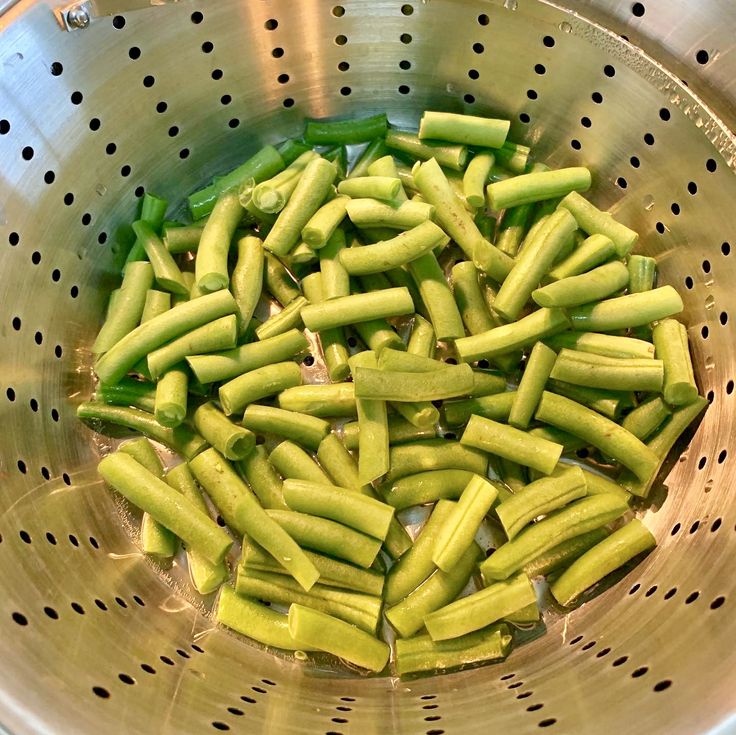
- herbs
Frozen fruits and vegetables- Any brand (frozen fruits cannot contain sugar)
- Any plain or mixed vegetables
- Mashed potatoes
- Any kind of packaging (bag, box)
- Any size (except disposable bags)
- Potatoes are allowed with or without salt.
- organic
NOT ALLOWED
- Vegetables with sauces such as cheese sauce or any other sauce.
- Seasoned, flavored or breaded
- Products containing added sugar, fats, oils or seasonings
- Vegetables mixed with pasta, rice or any other ingredient.
- Single serving bags
- Made with frozen potato cutlets, french fries
- Dehydrated potatoes
- Fruit in syrup (heavy, light, naturally light, very light, etc.)
* New item
Beans, peas and lentils- DRY
- CANNED regular or low sodium (ripe beans, peas or lentils - 15.
 5-16 oz only)
5-16 oz only)
ANY BRAND
NOT ALLOWED
Green beans, green peas, kidney beans, orange beans, wax beans, baked beans, pork and beans, meat or oils,
Organic beans, soups
Arachis oilonly 16 - 18 ounces
- Creamy or crispy
- Reduced fat / low fat
- natural
BRANDS
- Trademark
- Skippy
- Jif
NOT ALLOWEDOrganic peanut butter, peanut spread, freshly ground or whipped peanut butter, peanut butter mixed with jelly, marshmallows, chocolate or honey, peanut butter with added vitamins and minerals
9004 Canned fish 40004Up to 30 oz.
- Any combination up to the amount on WIC check
ANY BRAND
Iberia Jack Mackerel Only - 15 oz. jars packed in water or oil only, may contain bones and skin, plain
varieties onlyLight Tuna Minimum 5 oz.












